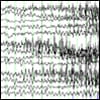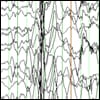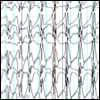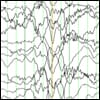- Find a Doctor
-
For Parents
- Before Your Visit
- During Your Visit
- After Your Visit
- More Resources for Parents
Patient & Visitor Resources -
Services
- Locations
-
About Us
- About Childrens
- Find it Fast
- Additional Resources
Find it FastAdditional Resources - MyCHP
- Find a Doctor
- For Parents
-
Services
-
Frequently Searched Services
- Asthma Center
- Brain Care Institute (Neurology & Neurosurgery)
- Cancer
- UPMC Children's Express Care
- Ear, Nose, & Throat (ENT)
- Emergency Medicine
- Endocrinology
- Gastroenterology
- Heart Institute
- Genetic & Genomic Medicine
- Infectious Diseases
- Nephrology
- Newborn Medicine
- Primary Care
- Pulmonary Medicine
- Rheumatology
- Surgery
- Transplant Programs
- See All Services
-
Frequently Searched Services
- Locations
- About Us
- MyCHP
- More Links









 Generalized tonic-clonic seizures are characterized by five distinct phases that occur in the child. The body, arms, and legs will flex (contract), extend (straighten out), tremor (shake), a clonic period (contraction and relaxation of the muscles), followed by the postictal period. During the postictal period, the child may be sleepy, have problems with vision or speech, and may have a bad headache, fatigue, or body aches.
Generalized tonic-clonic seizures are characterized by five distinct phases that occur in the child. The body, arms, and legs will flex (contract), extend (straighten out), tremor (shake), a clonic period (contraction and relaxation of the muscles), followed by the postictal period. During the postictal period, the child may be sleepy, have problems with vision or speech, and may have a bad headache, fatigue, or body aches. Tonic seizures usually last less than 20 seconds. The child’s muscle tone increases and the body and limbs make sudden stiffening movements. These seizures most often occur during sleep.
Tonic seizures usually last less than 20 seconds. The child’s muscle tone increases and the body and limbs make sudden stiffening movements. These seizures most often occur during sleep. This type of seizure refers to quick movements or sudden jerking of a group of muscles. Myoclonic seizures tend to occur in clusters, meaning that they may occur several times a day, or for several days in a row.
This type of seizure refers to quick movements or sudden jerking of a group of muscles. Myoclonic seizures tend to occur in clusters, meaning that they may occur several times a day, or for several days in a row. These seizures are characterized by a brief altered state of consciousness and staring episodes. Typically the child's posture is maintained during the seizure. The mouth or face may move or the eyes may blink. An absence seizure usually lasts no longer than 30 seconds. When the seizure is over, the child may not recall what just occurred and may go on with his/her activities, acting as though nothing happened.
These seizures are characterized by a brief altered state of consciousness and staring episodes. Typically the child's posture is maintained during the seizure. The mouth or face may move or the eyes may blink. An absence seizure usually lasts no longer than 30 seconds. When the seizure is over, the child may not recall what just occurred and may go on with his/her activities, acting as though nothing happened. With atonic seizures, there is a sudden loss of muscle tone and the child may fall from a standing position or suddenly drop his/her head. During the seizure, the child is limp and unresponsive
With atonic seizures, there is a sudden loss of muscle tone and the child may fall from a standing position or suddenly drop his/her head. During the seizure, the child is limp and unresponsive